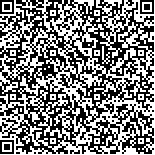下载中心
优秀审稿专家
优秀论文
相关链接
摘要

在卫星遥感大气研究中,已有的精确反演海洋表面反射率和其上空气溶胶光学厚度分布的算法,由于陆地地表像元反射率的不均一性,使得这些方法在应用于陆地表面反射率的反演中具有一定的局限性。而利用三步校正法可以去除地表邻近像元的影响,从而消除这种局限性。文中介绍了三步校正的算法,并对日本千叶地区ASTER卫星数据进行了大气和地表邻近像元的影响校正,精确地反演了该地区的地表反射率,通过地表反射率和气溶胶光学厚度之间的关系计算得到了气溶胶光学厚度的分布。同时证明了在洁净天反演的地表反射率可以应用于反演同一季节中非洁净天的气溶胶光学厚度分布,这样不但减小了气溶胶模式选择的影响,而且实现了在缺少太阳辐射计数据情况下获得气溶胶光学厚度分布的目的。
关键词:
ASTER Landsat/TM 大气校正 地表反射率 气溶胶光学厚度In the atmospheric research by satellite remote sensing,due to the inhomogeneous pixels of land surface,there are some limitations of the present algorithms in the reflectivity retrieve of the earth's surface,which are used in deducing the oceanic surface reflectivity and the aerosol optic thickness above it.Now these limitations can be removed by the three-step approach.The algorithm of three-step approach was introduced;the earth's surface reflectivity of Chiba was retrieved after the atmospheric correction and effect removing of the neighboring pixels to the ASTER satellite data.The distribution of the aerosol optic thickness was then retrieved from the earth's surface reflectivity.The earth's surface reflectivity in the fair weather days was applied to retrieve the aerosol optic thickness of the other days in the same season,which not only reduced the effect of the choice of aerosol model but also realized the deduction of the aerosol optic thickness distribution without the data from the sun photometer.

